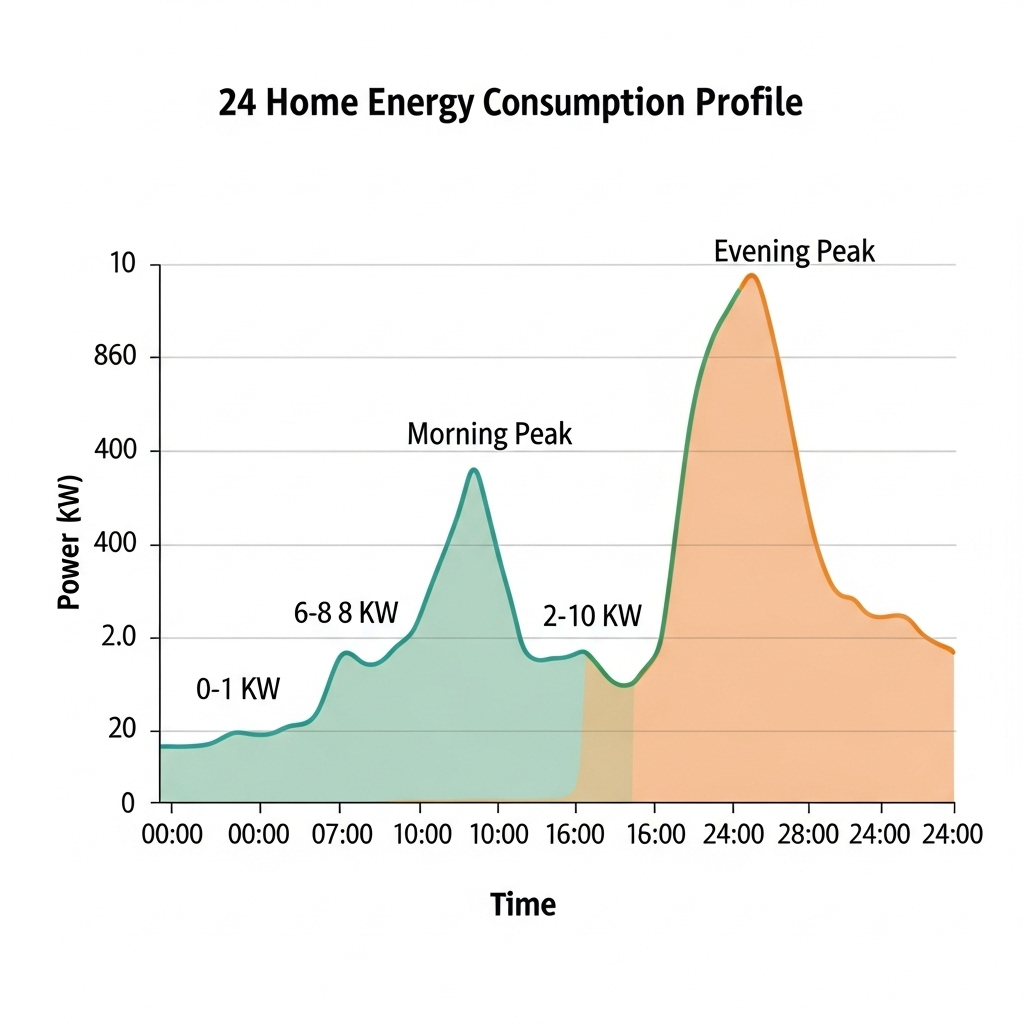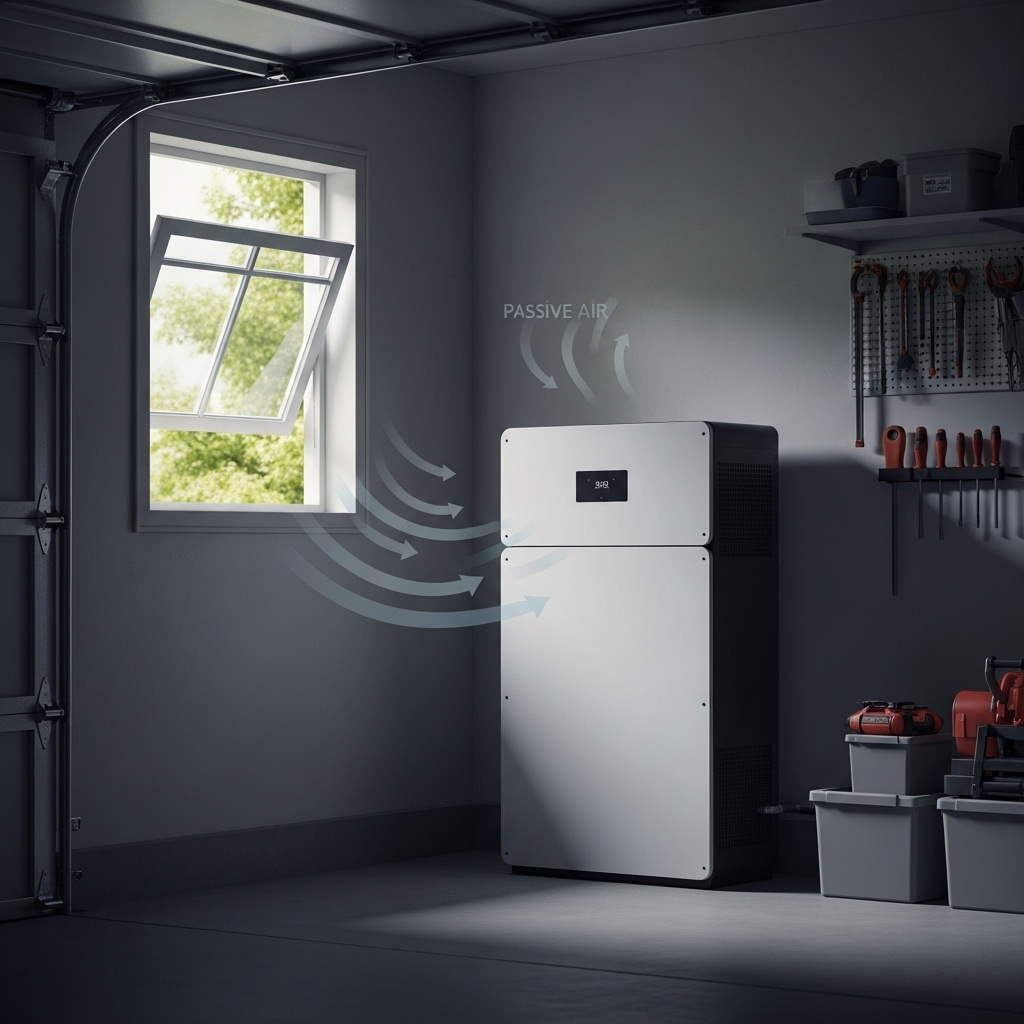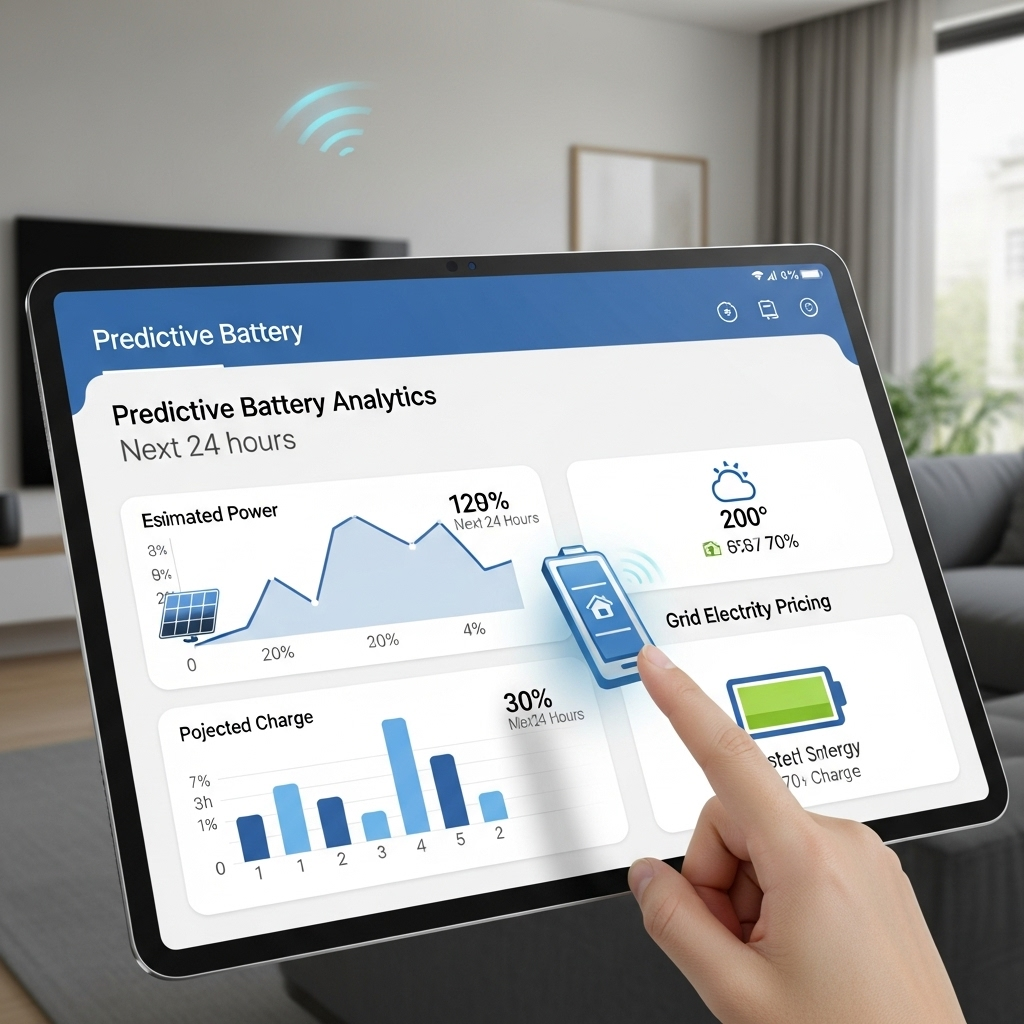During a power outage, your home battery system is the key to keeping the lights on and essential appliances running. But if its backup settings are based on guesswork, you might face a shorter runtime than expected, or worse, a total system shutdown. The solution is to move from assumptions to data. By understanding your home's unique energy consumption patterns—its load profile—you can configure your backup settings with precision and confidence.
What Exactly is a Load Profile?
Think of a load profile as your home's energy fingerprint. It's a detailed graph showing your electricity usage over a period, revealing when you use the most and least power. This data is fundamental to creating a backup strategy that works for your specific needs, not just a generic template.
Defining Your Home's Energy Signature
A load profile captures the ebbs and flows of your household's power demand. It shows the morning rush when coffee makers and toasters are active, the quiet midday period, and the evening peak when lights, cooking appliances, and entertainment systems are all in use. This signature is unique to your family's lifestyle, the appliances you own, and even the season.
Why Generic Settings Often Fail
Default backup settings are a one-size-fits-all solution in a world where no two homes are alike. They don't account for your specific high-wattage appliances or the number of people in your household. Relying on these presets can lead to critical failures. For example, the system might not reserve enough power to get your essential devices through an extended outage, or it could be overloaded by non-essential appliances, causing a trip when you need it most.
The Tools for Data Collection
Gathering the data for your load profile is easier than you might think. Most modern home energy storage systems come with a monitoring app that tracks real-time and historical consumption. You can also use third-party energy monitors that clamp onto your home's main electrical panel or even request detailed interval data from your utility company. The goal is to get a clear picture of your typical daily and weekly usage.
Building Your Load Profile: A Practical Approach
Creating a useful load profile involves a few simple steps of data collection and analysis. This process empowers you to make informed decisions about what your battery needs to do during an outage.
Capturing Typical and Peak Usage
To start, monitor your home's energy consumption for at least one full week. This will capture the differences between weekday and weekend patterns. Note the times when consumption spikes—these are your peak loads. Also, identify your baseline consumption, which is the energy your home uses overnight when most appliances are off. This data provides the foundation for all your backup calculations.
Identifying Critical vs. Non-Critical Loads
Next, walk through your home and categorize your appliances. A critical load is anything essential for safety and basic comfort during an outage. A non-critical load is anything you can live without. This exercise is crucial for prioritizing what your battery should power.
| Load Type | Examples | Typical Power (Watts) |
|---|---|---|
| Critical Loads | Refrigerator, Freezer, Medical Devices, Sump Pump, Basic Lighting, Internet Modem | 150 - 800 W |
| Non-Critical Loads | Air Conditioner, Electric Vehicle Charger, Washer/Dryer, Dishwasher, Entertainment System | 1,500 - 5,000+ W |
Disclaimer: The wattages listed are estimates. Always check your appliance's nameplate for exact power requirements.
Analyzing the Data for Actionable Insights
With your data collected and loads categorized, look for patterns. How much power do your combined critical loads require to run simultaneously? What is the total energy (in kilowatt-hours) they consume over 24 hours? This analysis will directly inform how you configure your battery's reserve capacity and which circuits to prioritize for backup.
Translating Your Load Profile into Safe Backup Settings
Now you can use your data to tune your battery's backup settings. This data-driven approach ensures your system is prepared for a real-world outage, maximizing reliability and safety.
Setting the Right Reserve Capacity
Your load profile tells you exactly how much energy your critical appliances need. Based on this, you can set a minimum State of Charge (SoC) reserve on your battery. For instance, if your critical loads consume 8 kWh per day, setting a reserve of 8-10 kWh ensures you have enough power for at least 24 hours of backup. This prevents the battery from being fully depleted by daily self-consumption, saving its power for when it's truly needed.
Prioritizing Circuits for Maximum Uptime
Most modern battery systems allow you to designate specific circuits for backup power. Using your critical loads list, you can configure the system to power only the essentials, like the kitchen circuit for the refrigerator and a living room circuit for lights and the internet. This prevents non-critical appliances, such as an air conditioner, from draining the battery and shortening your backup runtime.
Avoiding System Overloads
Your load profile reveals your home's peak power demand. You must ensure this peak does not exceed your inverter's continuous power rating. Some appliances, like refrigerators or pumps, have a high 'inrush' or 'surge' current when they first start. Your inverter must be ableto handle these momentary spikes. According to research on distributed energy resources, managing these local power flows is essential for stability. As noted in the IEA's System Integration of Renewables report, the precise distribution of loads on a circuit strongly determines their impact.
Fine-Tuning and Long-Term Monitoring
Configuring your backup settings is not a one-time task. Your energy needs change over time, and regular monitoring ensures your system remains optimized for reliability and longevity.
The Importance of Seasonal Adjustments
Your energy consumption in the summer is likely very different from your winter usage. Heating and cooling systems are major energy consumers, so it's wise to review your load profile and backup settings at least twice a year. A reserve that's adequate in the spring might not be sufficient during a winter storm.
The Role of Continuous Performance Monitoring
Continuously monitoring your home battery performance helps protect your investment. By keeping an eye on key metrics, you can spot potential issues before they become serious problems. For a detailed guide on the essential figures to track, this ultimate reference on solar storage performance offers a comprehensive overview of metrics like State of Health (SoH) and Depth of Discharge (DoD).
Data-Driven Decisions for Future Upgrades
Your load profile is an invaluable tool for planning future upgrades. If you find that your current battery is barely meeting your needs, the data will help you accurately size a new or expanded system. As the IEA's China Power System Transformation report highlights, battery storage is increasingly used for location-specific services, and accurate data is key to effective deployment. This principle applies just as much to a single home as it does to a large distribution network.
A Data-First Approach to Energy Security
By moving away from default settings and using a detailed load profile, you transform your home battery from a simple appliance into a highly reliable, customized energy security system. Analyzing your energy signature allows you to set a safe reserve capacity, prioritize critical circuits, and prevent overloads. This data-driven approach not only ensures your lights stay on during an outage but also protects your investment and provides true peace of mind. Start monitoring your energy usage today to unlock a safer, more resilient home.
Frequently Asked Questions
How long should I monitor my energy usage to create a reliable load profile?
A full week is a good starting point, as it captures both weekday and weekend patterns. For even greater accuracy, monitoring for a month in a key season (like summer or winter) will provide a more comprehensive dataset that accounts for variations in weather and routines.
What if my battery system doesn't provide detailed load data?
If your system's app lacks detailed analytics, you can install a third-party whole-home energy monitor. These devices connect to your electrical panel and provide granular, real-time data on your consumption, which you can view on a smartphone app.
Can I damage my battery by setting the backup reserve too low?
Setting the reserve too low won't directly damage the battery, but it defeats the purpose of having a backup. If the reserve is set to 10% and your daily usage depletes the battery to that level, you will have very little power available if an outage occurs. It's best to calculate your critical load needs and set the reserve accordingly.
How often should I review and adjust my backup settings?
It's a good practice to review your settings seasonally, especially if your heating or cooling needs change significantly. Additionally, if you purchase a major new appliance, like an electric vehicle or a hot tub, you should re-evaluate your load profile and adjust your backup settings to accommodate the new load.





Leave a comment
All comments are moderated before being published.
This site is protected by hCaptcha and the hCaptcha Privacy Policy and Terms of Service apply.